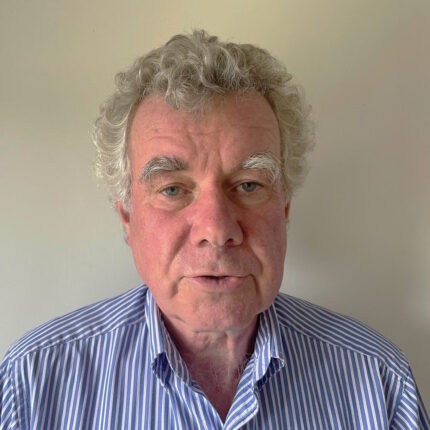Times are exceptionally hard for higher education institutions.
The 2012 changes in university funding launched a destabilising decade in which rapid expansion of some institutions has threatened the existence of others – and the fee increase of 2012 has now been eroded by inflation.
Closures of admired departments and redundancies of long-serving staff are again hitting the headlines. And now on top of this a swathe of institutions face a painful increase in their pensions bill.
What is the TPS?
Institutions which had previously been polytechnics got university status in 1992. Their academic staff had originally been on local authority payrolls and in the Teachers’ Pension Scheme (TPS); and the new universities were required to remain in TPS.
TPS is an unfunded scheme: contributions from employees and employers are paid into HM Treasury (HMT) which also pays out pensions, but HMT does not hold contributions in a pension fund.
The economics and accountancy of unfunded pension schemes can seem arcane, but it helps to compare them with funded schemes.
In a funded scheme like USS, the fund invests the current contributions of employees and employers in order to turn them into future pensions. The economics of the scheme depends on the returns which USS makes on its investments. The current cost of future pension liabilities is the cost of making an investment now that will cover the future liability; and the higher is the rate of return on the pension fund’s investments, the lower will be that current cost.
When market returns are low, as in the recent past, USS is less confident of its funds being sufficient to meet its future liabilities; but when market returns rise, USS’s fortunes improve.
Because pension schemes transform contributions into pensions over long periods of time, the calculation of the current cost of future liabilities is very sensitive to small changes in the rate of return. £100 invested now with an annual rate of return of 3 per cent generates £326 in 40 years’ time; but at 2 per cent, almost £150 would need to be invested to realise £326. The 1 percentage point decrease in the rate of return raises the current cost of a 40-year-ahead payment by almost 50 per cent.
The winter of our discount rate
In an unfunded public sector scheme, contributions disappear into the maw of HMT, and although HMT doesn’t have a pension fund it does have the ability to transform current contributions into future expenditure. TPS contributions paid into HMT help fund public sector investments which generate future government revenue from which TPS pensions are paid. HMT’s Green Book tells us that public investment projects are appraised using rules which require them to make a return of at least 3.5 per cent (the social time preference rate, or STPR, whose derivation we happily need not pursue here).
In the jargon of the trade, the rate of return actually used to calculate the required contributions into unfunded public sector pension schemes is called the SCAPE discount rate (Superannuation Contributions Adjusted for Past Experience – if you really want to know). Since HMT requires a rate of return on public investment at least equal to the STPR it can earn returns at this rate on TPS contributions, so the SCAPE discount rate which assesses the adequacy of the contributions should be set equal to the STPR. HMT accepted that argument until 2011.
However, a review undertaken by the Treasury in 2011 concluded that the SCAPE rate should be changed from the STPR to a rate equal to the expected growth rate of national income. Effectively the argument was that to pay for a pension which is x per cent of expected national income in 30 years’ time you should contribute x per cent of current national income. This argument is thin to say the least: but the gap between the two rates was not sufficiently large to have much immediate effect.
Experience with the new rate has been problematic. The best available estimate of the long-run growth rate is the medium-term estimate of the Office for Budgetary Responsibility (OBR). Small changes in OBR’s estimates of medium-term growth had big, but hard to justify, effects on estimated pension costs, and HMT launched a new review in 2021. The consultation document suggested it was giving serious thought to going back to the STPR.
But after a long silence, in March 2023 the Treasury announced it was going to stick to the new policy of setting the SCAPE discount rate at the expected rate of growth of national income.
An expensive mistake
This is not the place to try to pick apart the often convoluted attempts by HMT to justify sticking with a mistaken policy. The central concern is that if national income grows slowly then future public pensions will have to be paid out of a smaller pot than if income had grown faster. That’s true; but it’s true of all long-term government commitments. Gloomy forecasts of future growth pose hard questions about the affordability of defence, health and education services. HMT argued that pension commitments are particularly inflexible, but it’s hard to see why uniquely in this one area of public expenditure, future expenditure commitments should be treated differently from, say, the long-term and inescapable costs of nuclear waste disposal.
After 15 years in which a global financial crisis was followed by austerity, Brexit and Covid, the long-term economic outlook is much gloomier than it was a decade ago, and the impact of using the wrong discount rate is much bigger. The STPR remains at 3.5 per cent; but the expected growth rate of the economy used as the SCAPE rate has been successively reduced from 3 per cent in 2011, to 2.8 per cent in 2016, 2.4 per cent in 2018 and now, in the 2023 revaluations of TPS and other public sector schemes, to 1.7 per cent. And the latest OBR growth projection is lower still.
By itself the change in the discount rate from 2.4 to 1.7 per cent would have raised the employer contribution rate in 2024 by a whopping 15.6 percentage points, but fortunately there were offsetting factors so the contribution rate has risen by “only” 5 percentage points.
What it feels like for universities
A typical large post-92 with annual income of around £350m and staff costs of £200m will already be paying around £15m annually into TPS. It now faces an increase of around £3m in its TPS contributions. In the UK as a whole, the increased bill for HEIs is around £100m from institutions, many of which are already struggling to balance their books.
The government departments whose budgets pay the pension cost of public sector employees can look at contribution changes with a degree of equanimity. Last week’s Autumn Statement confirmed that the government is:
committed to providing funding for the increased cost of employer contributions from April 2024 for centrally funded employers.
Departmental budgets will be adjusted by HMT, and the Department for Education will provide additional funding to cover the increase in schools, colleges and early years providers. In short, for public sector employers it’s a funny-money exercise in which book-keeping entries are shunted between HMT and spending departments.
But the post-92 universities (and independent schools) are “autonomous bodies” whom HMT will not compensate, and for them it is a real-money exercise and far from funny. The autonomy of the post-92s doesn’t stretch to having the freedom to quit TPS.
Some £100m of teaching funds, largely derived from student fees, will each year be diverted to the Treasury because of a mistaken bit of accountancy that is not applied anywhere else in the public accounts, doesn’t apply to funded pension schemes, and, in reality, is not applied to any public sector employers.














Another aspect of the valuation that makes the employer contribution rates volatile is the 15 year deficit recovery period. If that was longer, the ups and downs (currently just ups) of valuations might be easier to handle.
TPS membership has now has almost as many pensioners as active members which appears to contribute to a higher % increase this time than in other unfunded public sector schemes
‘The autonomy of the post-92s doesn’t stretch to having the freedom to quit TPS.’ That’s not what I’m hearing. HE’S are trying everything to get out of enrolling staff into TPS.
HEIs cannot get out of offering TPS, but are definitely looking at what else can be offered if staff opt out voluntarily (few will), though they cannot compel staff to give up the right to TPS membership. So the options are cutbacks in other costs (including staffing) or offering USS or some Defined Contribution scheme on a voluntary basis or (very rare) re-employing academic staff in a subsidiary, but that comes with costs and risks
If they move staff into a subsidiary can they get staff to leave TPS? Its like leaving by the back door